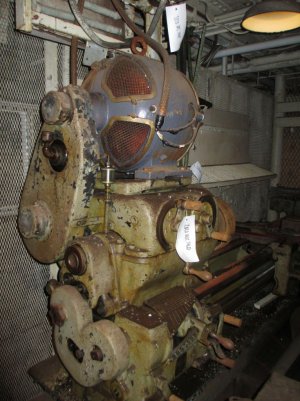The illustration above shows that the weight was borne on a narrow shoulder. Aren’t leveling screws that don’t have an integral pad typically tapered or rounded to locate them in pads as I described above? The screws on my lathe have rounded ends. Could the hollow screws be replaced with ordinary screws? The original system for the OP’s lathe is convenient but not a necessity. Once the lathe is set on the pads they’re not going anywhere. His Clausing weighs about the same as my Victor 13x40; 1500-1600 pounds. My Victor sits on four 12mm (under 1/2”) screws.That wouldn't really work for the OP's setup. The screws are hollow all the way through. They have a shoulder at the bottom that rests on the metal pad and they slightly protrude through the bottom, but are much smaller diameter than the body of the screw. There's a groove at the bottom of the screw for a retaining ring that keeps the pad secured to the screw. Putting the level screw on the concrete or on a metal pad like you've done would have all the weight on a small circle maybe 1/2" OD with a fraction of an inch all the way around for surface contact.
The Clausing’s screws are 7/8”. If a solid screw is reduced to 5/8” at the contact point the compressive strength is around 33,000 pounds each. Making an assumption here, if the existing screws have 80% of their area removed, they are still good for about 52,000 pounds of compressive strength each. That’s all based on a mid strength steel with a compressive strength of 109,000 psi.






